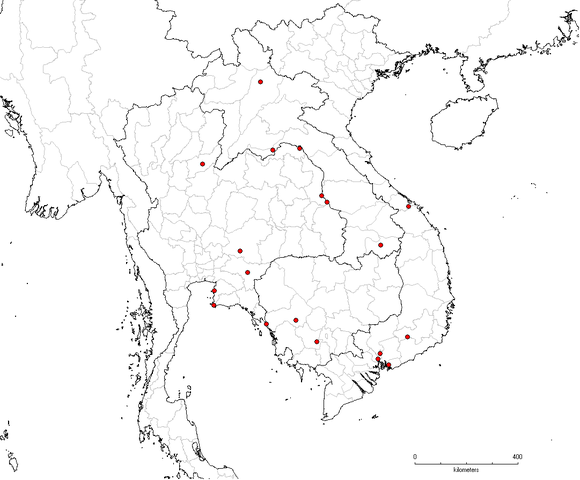Erycibe cochinchinensis
Nomenclature
Accepted name/Authority/Place of publication:
Erycibe cochinchinensis Gagnep., Not. Syst. 3: 138. 1915.
Description
Habit:
Woody climber or treelet to 6 m tall; stems terete, greyish, twigs glabrous.
Leaves:
Leaves oblong-elliptic to oblong-oblanceolate, 9–19 by 3–7 cm, coriaceous, drying reddish, base acute, apex obtuse or acuminate; lateral veins 7 or 8, curved near margin, slightly raised on underside; petiole 10–15 mm long, glabrous.
Inflorescences:
Inflorescences dense, axillary, glomerules up to 2 cm long; pedicels 3 mm long.
Flowers:
Flowers fragrant; sepals orbicular, equal, c. 3 mm diam., reddish hairy outside; corolla yellow, c. 9 mm long, lobes deeply bilobed, lobules entire; stamen filaments shorter than anther, anthers ovoid-acuminate, 1.7 mm long, scales 5, inserted between filaments at base of corolla tube; ovary subglobose, 2-celled.
Fruits:
Berry ellipsoid, 20 by 10–12 mm, ripening yellow-orange.
References:
Staples, G. 2010. Convolvulaceae. Fl. Thailand 10(3): 330–468.
Biogeography, Ecology and Natural History
Distribution Map:

Distribution:
Thailand, Laos, Cambodia, Vietnam.
Ecology:
Dry, disturbed evergreen forest, mixed
evergreen forest, on sandstone bedrock; altitude: c. 200–300 m.
Phenology:
Flowering: February, March; fruiting: April, May.
References:
Staples, G. 2010. Convolvulaceae. Fl. Thailand 10(3): 330–468.
Other information
Common names and uses:
Thao li phueng, Ka tit (Thai).
The berries are reported to be edible, sweet, and eaten locally in Thailand.
Authorship for webpage
Editor:
George Staples, Esmond Er
Contributors:

